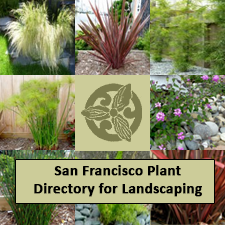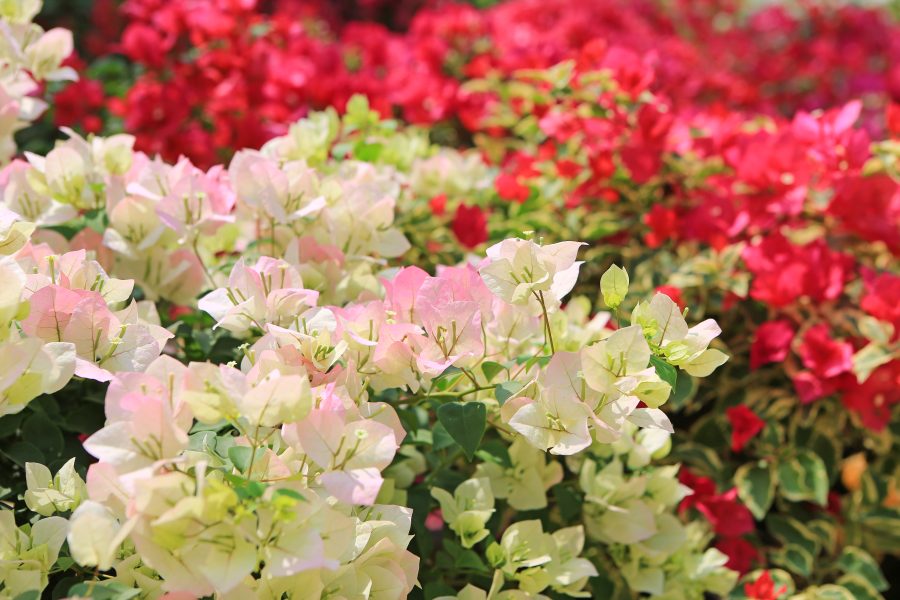
In San Francisco, where drought-tolerant plants are a big deal and succulents spring up everywhere, what’s a gardener to do when the rain pours down unexpectedly like it has this May?
According to the National Weather Service, this month has been the wettest May since 1998. In fact, it ranks in the top 12 for lots of rain. In San Jose, it’s the wettest since 2005. That’s all to say that if you feel like you’re slogging through your backyard, you’re not alone. If you feel like you’ve been swimming through the workdays, you’re probably right.
While the thought of rain might make you happy–after all, it’s the nectar of Nature for your plants-the reality of it may be too much. Here are a few tips to keep your garden happy no matter the weather.
Shore Up Your Vines.
If you’ve ever walked past a home covered in brightly colored purple, pink, magenta, yellow, white-even orange-flowers, chances are you’ve walked past flourishing Bougainvillea plant. It’s so prevalent, it might as well be San Francisco’s official flower. You can find these bursts of color from Telegraph Hill to Paradise Valley and everywhere in between.
But when Mother Nature drops a bucket of rain on top of them and whips them around with wind, a lot of that color can end up on the ground. How do you protect these beautifully colored carpets and flowering wallpaper?
The secret is keeping them shored up with a trellis, turning them into Bougainvillea standards (or trees), and giving them the added support they need.
- If you’re going to allow your Bougainvillea to lounge around in blooming luxury, you’ll need a trellis. Make sure your trellis is firmly tied down before training your Bougainvillea to grow on it. The trellis (or trellises) should be hardy and able to bear a fair amount of weight, because these plants will really blossom in normal San Francisco weather. This is yet another reason they’re so common here.
- If you’re going to push them to conformity, you can train your Bougainvillea to grow in tree shape. You’ll need to plant them in large pots that can be moved around (plant stands work well). As you allow plant stems to grow and shoot out from the root, braid them around each other while they’re still flexible enough to bend without breaking. This builds on the “trunk” of the tree and helps it to grow sturdy enough to support the crown with the bright colors. Use untreated stakes buried in the dirt next to the plant and tie the plant to the stake with an organic material such as strips of old rags (plastic will chafe the plant and can inhibit growth).
Plant Your Succulents in Well-Draining Soil
Succulents are excellent plants for San Francisco’s warm weather, but a little bit of extra rain can turn something beautiful into something rotten. While they flourish with a little bit of water, overwatering can destroy a thriving succulent. As well, the wrong kind of soil that won’t drain can cause root rot to set in.
For your succulents to thrive, you can do a few things.
- Plant them in pots of different sizes that can be moved during raining periods. This allows you to be flexible about where your succulents are being showcased, as well as being able to adapt their environment for the weather. The con is that you have to be very on top of things. If it rains while you’re gone and you don’t have your succulents in good soil, for example, say bye-bye to your paddle cactus.
- Plant them in the ground in well-draining soil. This is much easier on you and allows the succulent to drop roots. Planted in soil similar to their natural habit gives them the ability to thrive whether you’re around or not.
If you’re a “helicopter gardener” and you must meddle, you can toss a sheet over your plants during the rain. This protects sensitive new growth from being torched when the sun uses the fresh rainwater as a magnifying glass.
While it’s true that vines and succulents aren’t the only plants out there in San Francisco land, they are some of the most common.
By following these simple tips, you can keep your garden looking beautiful all season long. Keep your garden blooming and looking beautiful with a little bit of extra help. Shore up your plants; trim off the dead bits; plant them in the right type of soil.
If you need help planting or maintaining your garden, give Tamate Landscaping a call. We’re experts in creating and caring for gardens of all shapes and sizes, and we’d be happy to help you get the most out of your outdoor space. Your garden will thank you!



